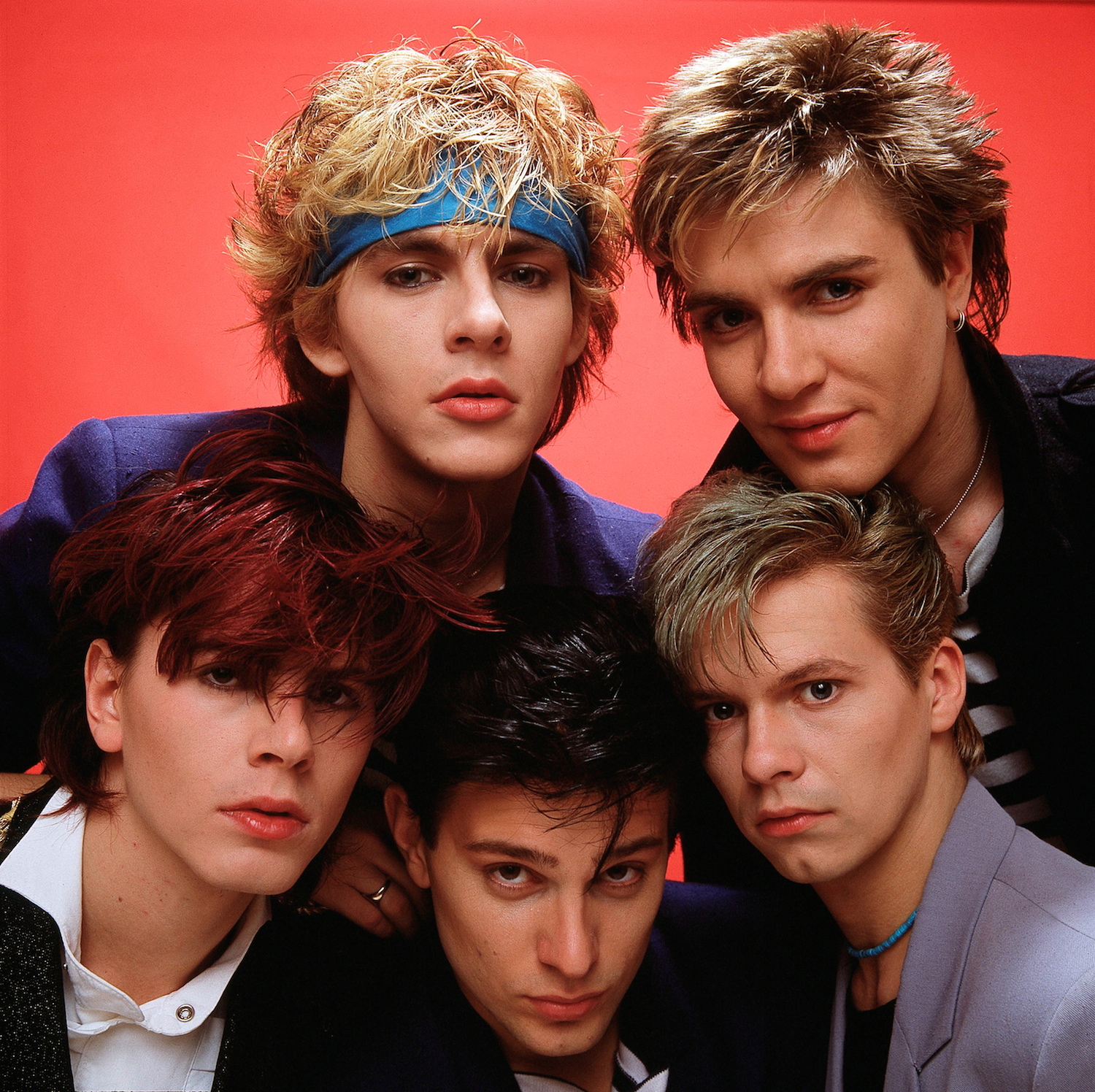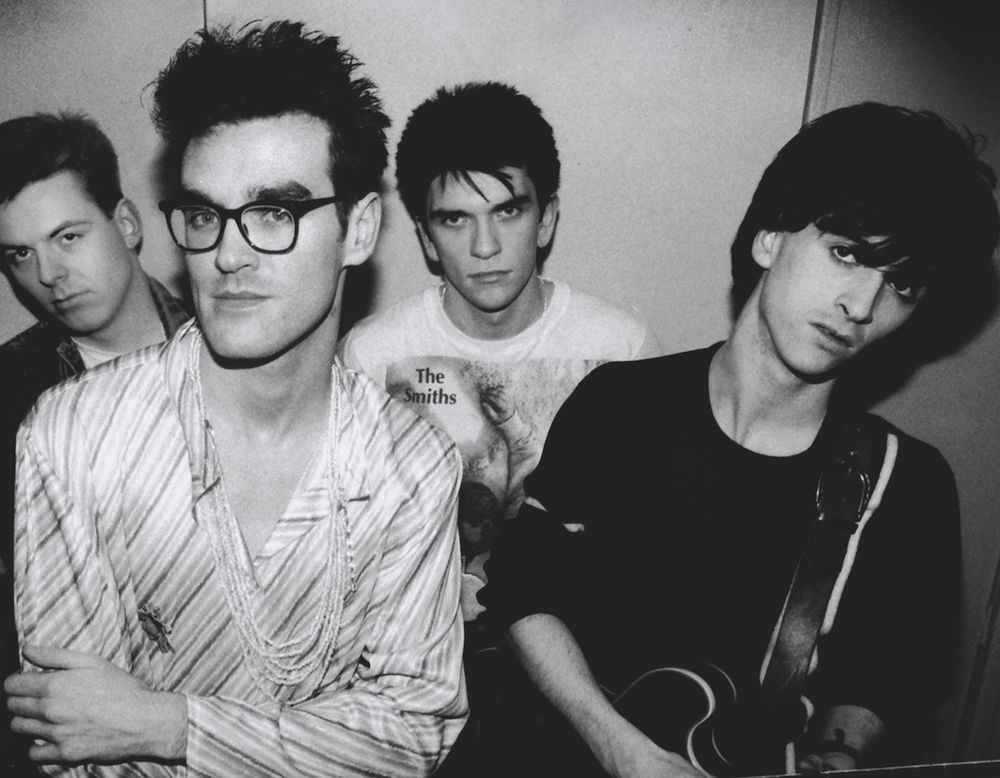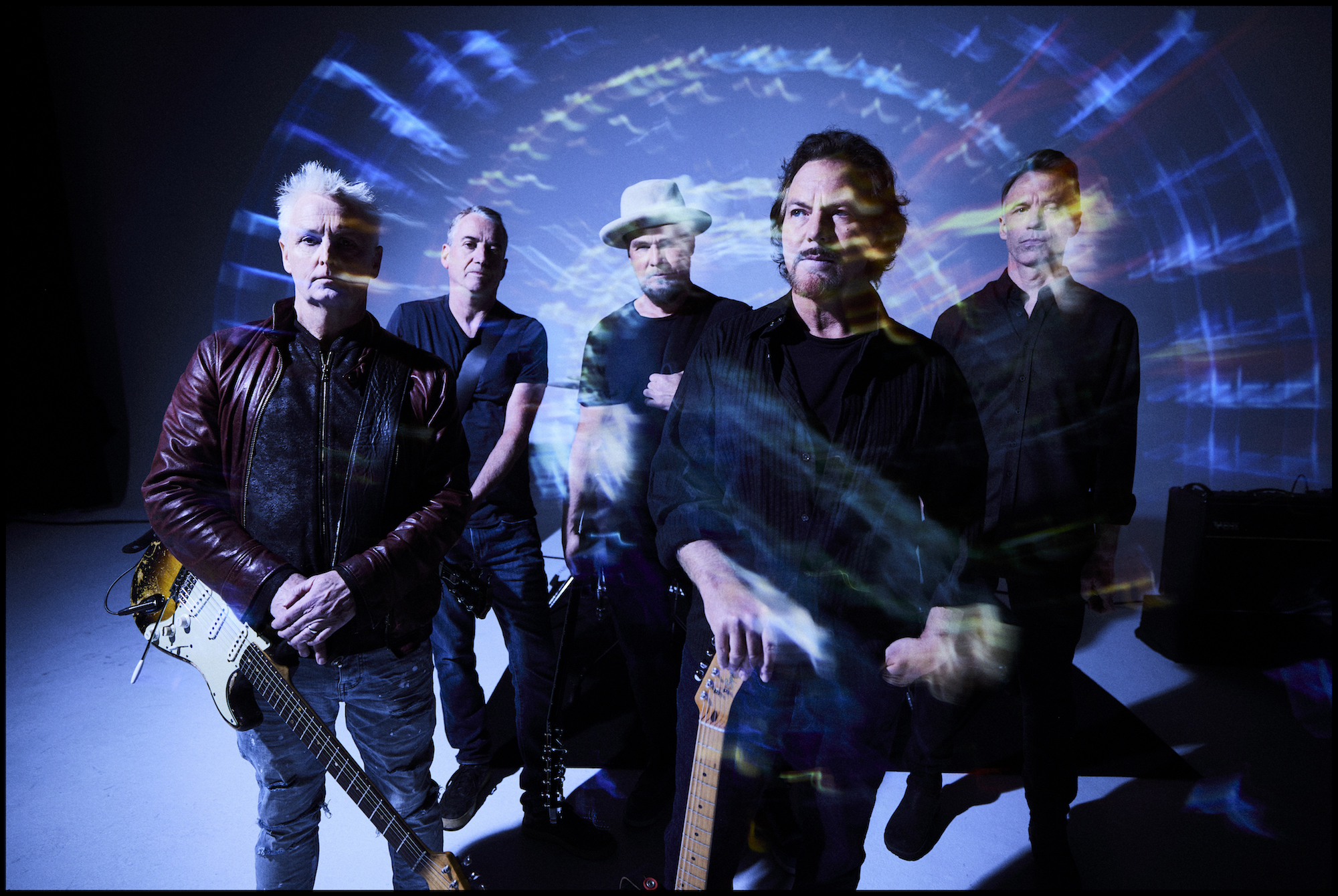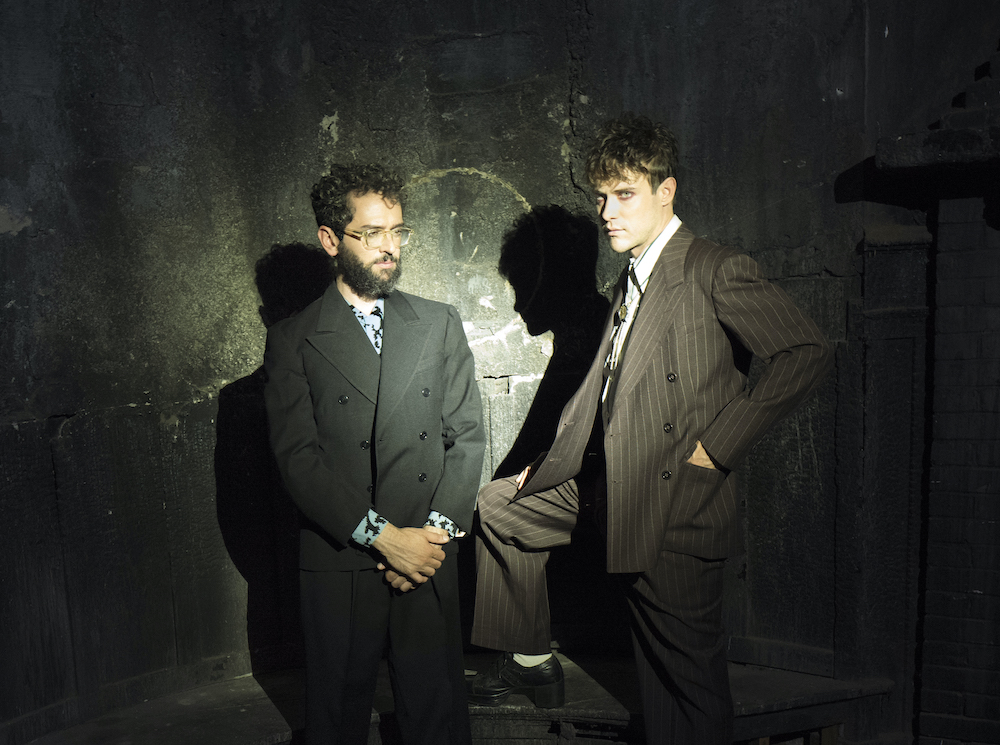By 1982, twenty full years after the initial British Invasion, the time-honored model of sending gifted, handsome young blokes across the Atlantic to plunder the hearts and wallets of English-mad America had begun to show signs of fraying. Warhorses like the Who and the Stones remained major draws, and the Police were continuing their slow ascension to full-on stardom, but in the main, American audiences had proven surprisingly resilient to the Anglo-entreaties of glam and new wave -- choosing homegrown stars like Kiss and the Cars over their British counterparts. Re-launching the formula ultimately required the perfectly manicured Birmingham five-piece Duran Duran, whose adventurous and relentlessly catchy series of early-'80s singles would for a time set into motion a hysteria as devoted and manic as any of their '60s forbearers.
The Fab Five, as the British press termed the band with customary subtlety, consisted of singer Simon Le Bon, keyboardist Nick Rhodes, and no less than three Taylors on bass, guitar, and drums: Roger, Andy, and John -- amazingly none of them related. Although each member played a vital role in formulating the band's signature sound, something in the uniform beauty and shared nomenclature of the members smacked of plasticity to many critics, who frequently seemed to regard them as a factory-assembled curiosity. The condescension toward synth-based artists was not atypical of the time, but looks especially ludicrous in retrospect. Working alongside such legendary producers as Colin Thurston and Nile Rodgers, Duran Duran were instrumental in creating a new vernacular for popular song whose resonance far outdistances the majority of their Heartland Rock contemporaries.
Named with adolescent exuberance after a character from Jane Fonda's 1968 quasi-sexploitation sci-fi film Barbarella, the band formed as teenagers in and around the largely unglamorous art-school scene at Birmingham Polytechnic. The group's youth belied the assuredness they would bring to early singles like "Planet Earth' and "Girls On Film," fully actualized amalgams of tough-minded rock, blue-eyed soul, and disco, drawing on inspirations ranging from Brian Ferry to Johnny Thunders to Chic. Duran Duran's self-titled debut album was an artistic triumph, and a UK smash, but barely made a splash in US markets, where a belief persisted that the band might be "too English" to capture American imaginations. Very shortly, that view would change.
Of the many bands whose trajectory dovetailed with the emergence of MTV as a driver of industry commerce, there was perhaps no greater beneficiary than Duran Duran. High production value videos for hits such as "Hungry Like The Wolf" and "Rio" portrayed the band as dashing world travelers, impeccably coiffed and functionally irresistible to the exotic women they met along their way. A US market carpet-bombed by the clips quickly turned the band into a household name and the go-to fever dream for adolescent girls numbering in the tens of millions. Three decades later, it remains ambiguous as to whether these images of decadent wealth and cultural domination are an arch commentary on the last days of the British Empire, or a kind of Thatcher-driven final spasm of old-school imperialism. In either event, they remain a nonpareil exemplar of world building through the unified impact of sound and vision.
For all of the success it afforded them, the band's talent for imprinting their image ultimately became a kind of liability, distracting from the formal achievements that made the best of Duran Duran's work a functional bridge between David Bowie's Low and Parklife-era Blur. As the members fractured in the mid '80s into a series of increasingly byzantine side and solo projects, the impact of their extraordinary run of singles rendered between '81-'85 became easier for discomfited critics to ignore. By the decade's end, Duran Duran seemed in danger of being ghettoized as a bit of kitsch nostalgia, filed alongside Flock Of Seagulls and Haircut 100.
History, however, has been extremely kind to Duran Duran. The band's self-aware humor and forward-looking musical approach has largely indemnified them from unkind reappraisal, and their musical and thematic preoccupation with surfaces, emotional inaccessibility, and unreliable narration now seem prescient and incisive during this era of social media-driven image-crafting. Duran Duran were frequently criticized in their first iteration for some perceived inauthenticity, but it is precisely the questions of persona and authenticity they posed that make them endlessly fascinating. In his breezy 2012 memoir In The Pleasure Groove, John Taylor discusses interacting with the media at the height of the group's global notoriety: "We would imitate the Beatles, and they would imitate the press that interviewed the Beatles." In this way, the band's postmodernism paralleled the simultaneous emergence of David Letterman as both talk-show host and "talk-show host." Neither made any attempt to deny or explain away the artifice and mechanics behind their stardom, they simply embroidered the absurdity of that artifice into their self-presentation.
As Duran Duran return with their just-released latest record, Paper Gods, that kind of clever self-awareness about image as refracted through media has become so normative that it can be strange to recall a time when there was anything unusual about it. Indeed it is a mark of their enduring influence that, for good and ill, there is very little about the new album to distinguish it from the reams of flamboyant, winking, well made synth pop that floods the current marketplace. It does provide an ideal opportunity to celebrate their legacy and revisit some of the classic and current tracks that helped to remake pop music in their image. Here are ten of their best.
10. "What Are The Chances?" (from Paper Gods, 2015)
The brooding, wistful, minor-key ballad from 2015's Paper Gods captures much of the magic of earlier great Duran laments ("Ordinary World," "Save A Prayer") and infuses them with contemporary influences to create a tiny masterpiece. Now nearly 35 years out from their first release, the band still sounds as fresh and striving as they did on initial indelible tracks like "Planet Earth" and "Girls On Film." This is in part largely explained by the Duranies voracious consumption and processing of the zeitgeist and their willingness for experimentation with the au courant. The rest is attributable to the band's extraordinary musicianship -- Nick Rhodes' inventive synths, the John and Roger Taylor reliable rhythm section, and Simon LeBon's gorgeous voice, all of which have not aged a day. On this stunning track, LeBon stands shoulder-to-shoulder with contemporary vocalists Sam Smith and Hozier, proving that the teacher is still the teacher, while the band buoys him with soaring strings, synths as the day is long, and a thoughtful backbeat. The result is a beautiful meditation on the mystery of existence.
[videoembed size="full_width" alignment="center"][/videoembed]
9. "The Reflex" Remix (7" single, 1984)
Far more a sonic triumph then a songwriting one, "The Reflex" first appeared in a more flaccid version on Seven And The Ragged Tiger, before being turned over to visionary super-genius producer Nile Rodgers for a remix. In his typical fashion, Rodgers was able to drill down on the embedded grooves and potential hooks on what was originally a fairly pedestrian Duran Duran song and turn them into an irresistible, arena-ready event. The finished product is testament to both the flagging inspiration of a band in the throes of physical and creative exhaustion and the capacity of the legendary hitmaker Rodgers to work miracles when encountered with nearly any challenge. Even though the Durans' source material feels slight and banal by previously established standards, the group deserves full credit for identifying early on the legitimacy of remix culture, and finding the right man in Rodgers to execute their vision.
[videoembed size="full_width" alignment="center"][/videoembed]
8. "Electric Barbarella" (from Medazzaland, 1997)
Now largely untethered from any of the Taylors (John went on hiatus during recording), the two remaining original Durans -- Simon LeBon and Nick Rhodes -- abetted by guitarist Warren Cuccurullo, soldiered forth with putting together 1997's Medazzaland. The record was mostly unremarkable, save for the exciting single "Electric Barbarella," a track that pays homage to the band's namesake movie, and its attendant sexy video, which is nowhere near as pornographic as "Girls On Film" but still edgy enough to make you shift in your seat uncomfortably if dancing isn't your thing. LeBon and Rhodes both shine on this recording, the former showing off his awe-inducing ability for harmonies on the infectious chorus and the latter layering synth on synth to drive the track straight into your aural pleasure centers. A decade off from their heyday, the ever-searching nature of Duran Duran finds them not only acknowledging, but fully incorporating newer influences, like the Madchester sounds of the Stone Roses and the Happy Mondays, easily embroidering them into yet another of a seemingly endless stream of indelible hits.
[videoembed size="full_width" alignment="center"][/videoembed]
7. "Save A Prayer" (from Rio, 1982)
The stunning pop ballad from 1982's Rio is a shrugging acknowledgement and acceptance of the realities of those passionate love affairs that burn brightly but also quickly. By 1982, the world's most beloved Brummie lads were certainly no strangers to one-night stands, and on "Save A Prayer" LeBon addresses the subject matter in a manner that is both realistic without being cynical and empathetic without being saccharin. The track itself contains some of Nick Rhodes' most lovely work, with the rest of the band taking a more subdued posture that allows the accumulating synths to swell and recede and create a tension and atmosphere that has echoes of Gentlemen Take Polaroids-era Japan and early O.M.D., while LeBon's crystalline, longing vocal provides an emotional pull similar to that of Bryan Ferry's gorgeous 1982 lament "More Than This."
[videoembed size="full_width" alignment="center"][/videoembed]
6. "Is There Something I Should Know?" (From Duran Duran, 1981)
Arguably the most ambivalent love song since George Harrison's "If I Needed Someone," the pleasure groove beat and off hand sentiment of "Is There Something I Should Know?" ingeniously depicts the wandering eye of a sexually omnivorous lothario at once anxious over his next breakup, and excited to exploit it for emotional advantage. Taking as its jumping-off point the beguiling lite-disco and synth approach of Blondie's classic "Heart Of Glass" and doubling down on its cheerful cynicism, this early Duran Duran highlight finds the band creating a new template for contemporary hitmaking -- luxuriant, self assured and practically daring the listener to separate counterfeit emotions from actual ones. In Duran Duran's world, the difference is subtle, and perhaps ultimately unimportant.
[videoembed size="full_width" alignment="center"][/videoembed]
5. "Hungry Like The Wolf" (from Rio, 1982)
The fact that the band credits the inspiration for "Hungry Like The Wolf" as being an interpolation of Gordon Lightfoot's "If You Could Read My Mind" and the childhood fable of "Little Red Riding Hood" is illustrative of the broad and broadly weird thicket of influences that made this most unusual music possible. Also noteworthy is the fact that in the hands of just about anybody else, the content in the video here (a monarchist's fantasy of a Sri Lankan sex safari) would be utterly appalling. Somehow, the boys just make it all seem like a good-natured romp. The most formally rock-oriented and guitar-driven track of their early classics -- this is the Durans "Beat It" -- with a T.Rex-meets-Ultravox interplay of guitar and synths and Simon LeBon's unstoppable chorus, all of which propel the song in exhilarating and gratifying ways.
[videoembed size="full_width" alignment="center"][/videoembed]
4. "Ordinary World" (from Duran Duran - The Wedding Album, 1993)
After losing a close friend to suicide in the late '80s, Simon LeBon found an outlet for his grief by writing a triptych of songs to help him get through the experience. One of those three tracks is the exquisitely beautiful "Ordinary World," which appears on the band's 1993 semi-self-titled Wedding Album. LeBon's heartache and confusion over his loss comes through immediately in the opening couplet: "Came in from a rainy Thursday on the avenue/ Thought I heard you talking softly/ I turned on the lights, the TV, and the radio/ Still I can't escape the ghost of you." An equally poignant companion piece to REM's contemporaneous "Everybody Hurts," this is Duran Duran at their most vulnerable. A painful acknowledgment that no amount of success or glamour will ever protect them from existential realities.
[videoembed size="full_width" alignment="center"][/videoembed]
3. "Rio" (from Rio, 1982)
Perhaps the most audacious of the band's quasi-comic flesh trade travelogues, the urgent, irresistible title track to 1982's "Rio" re-imagines the fetishism of Iggy Pop and David Bowie's "China Girl" as a salacious tribute to a South American beauty with untold powers of seduction. A majestically arranged mélange of keyboard arpeggios, woozy synths, stabbing guitar and a perfectly louche sax solo, "Rio" stretches out to five minutes without feeling a second overlong. This is the sound of a band operating with a fully integrated vision and an absolute confidence in their ability to pull it off. The fact that the material skates cheerfully into the dicey terrain of exotic stereotypes and emerges as utterly winning on the other side, is a tribute to just how good Duran Duran was at this point. Like the Stones' "Brown Sugar," this all just seems so wrong and just feels so right.
[videoembed size="full_width" alignment="center"][/videoembed]
2. "Girls On Film" (from Duran Duran, 1981)
The lead track from the band's self-titled first release originally had traction with audiences owing to a positively filthy video the boys conceptualized with Godley & Creme to be shown in RockAmerica venues. Said video ran an impressive gamut of lascivious acts intercut with shots of the band looking fantastic that truly captured the imaginations of many viewers. And while the "point" of the song is to critique the exploitation of women in the modeling industry, the video kind of distracts from this. But absent the video, "Girls On Film," with its killer hook and unstoppable groove is so packed with pure, uncut pleasure that you easily realize you don't even need the visual component to have a good time. Featuring synth-based polyrhythms sounding something like the British response to the Talking Heads' Fear Of Music and combined with a generous helping of Kool and the Gang, this is irresistible, decadent fun that sounds as fresh today as it did 3-plus decades ago.
[videoembed size="full_width" alignment="center"][/videoembed]
1. "New Moon On Monday" (from Seven And The Ragged Tiger, 1983)
The sublime second single from 1984's Seven And The Ragged Tiger manages the neat trick of working perfectly as both a moody meditation and soaring anthem, a difficult to achieve alchemy that U2 would soon master and turn into a cottage industry all its own. Unspooling a noir-ish tale of love and espionage over the course of its unforgettable 4:16 groove, "New Moon On Monday" is all pocket rhythm section and percolating synths; a master class in tension building and relief. Simon Le Bon persuasively conjures his best "Young Americans" low register Bowie, a loving tribute if ever there was one. Besides, by this time Bowie had already borrowed back on the Nile Rodgers' assisted "Let's Dance." "New Moon On Monday" is unquestionably one of the landmark singles of the decade.
[videoembed size="full_width" alignment="center"][/videoembed]






